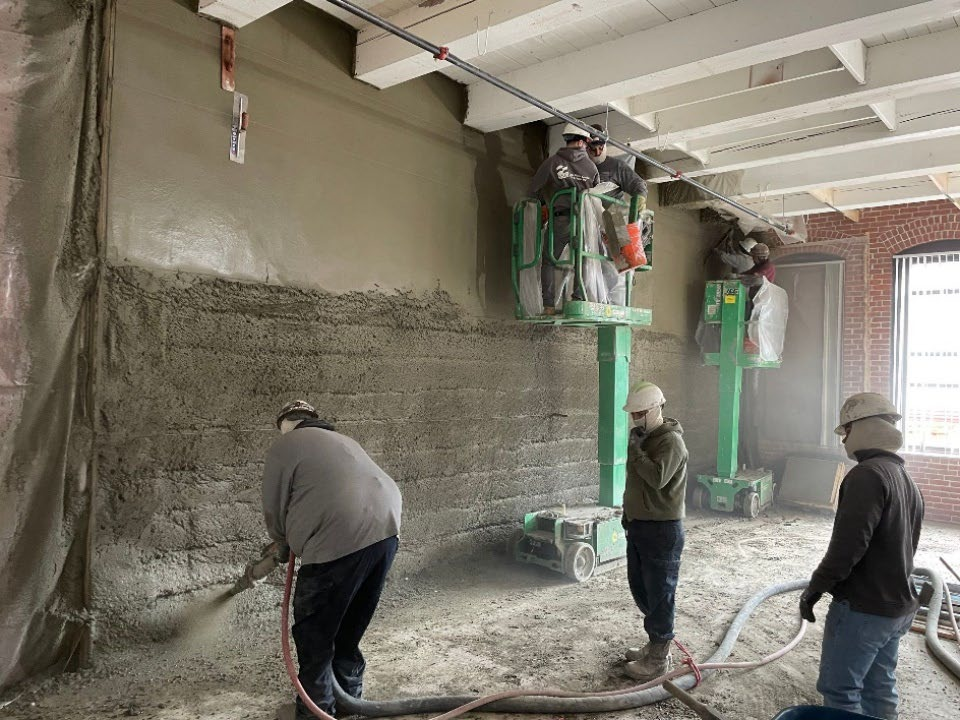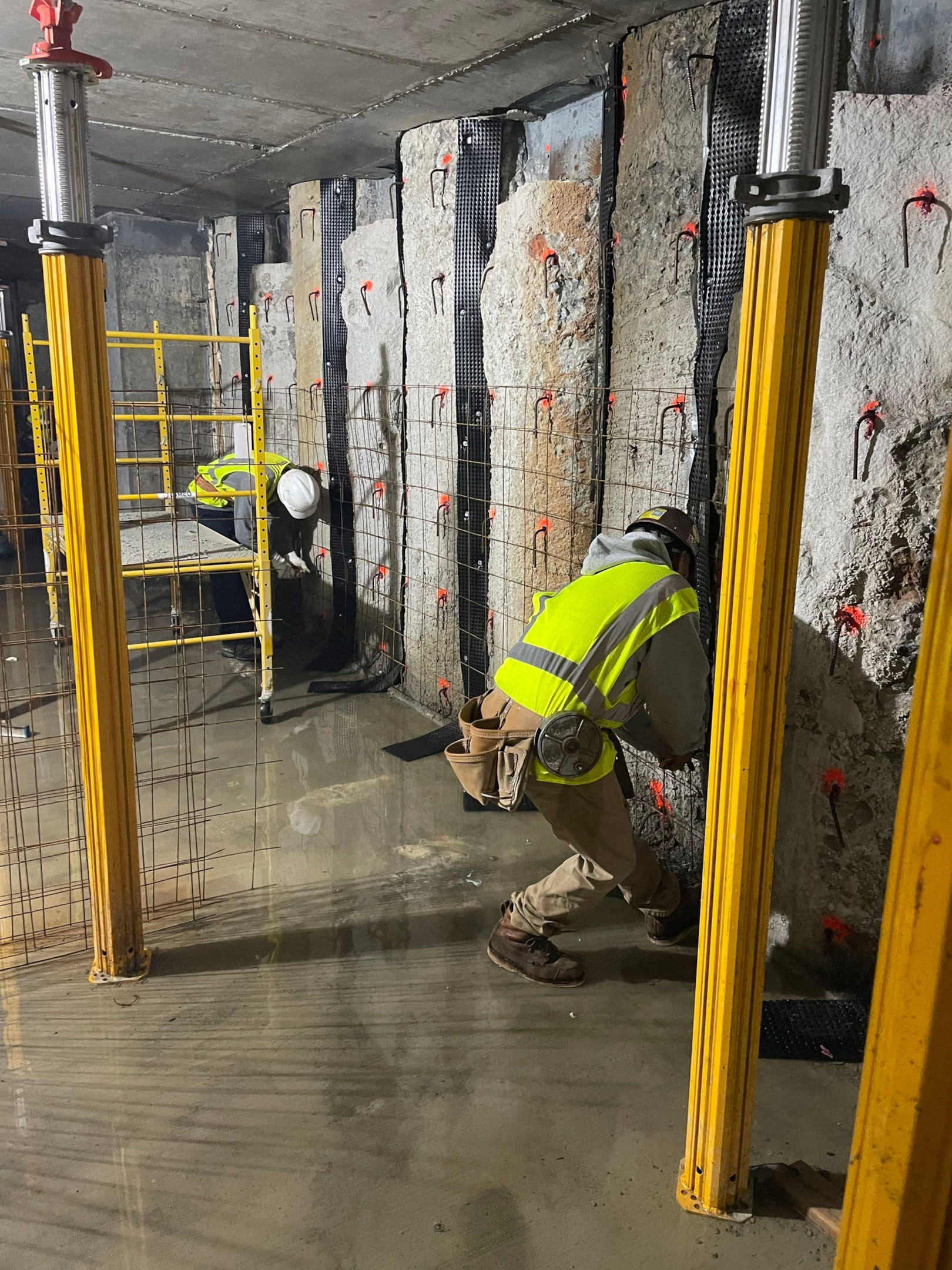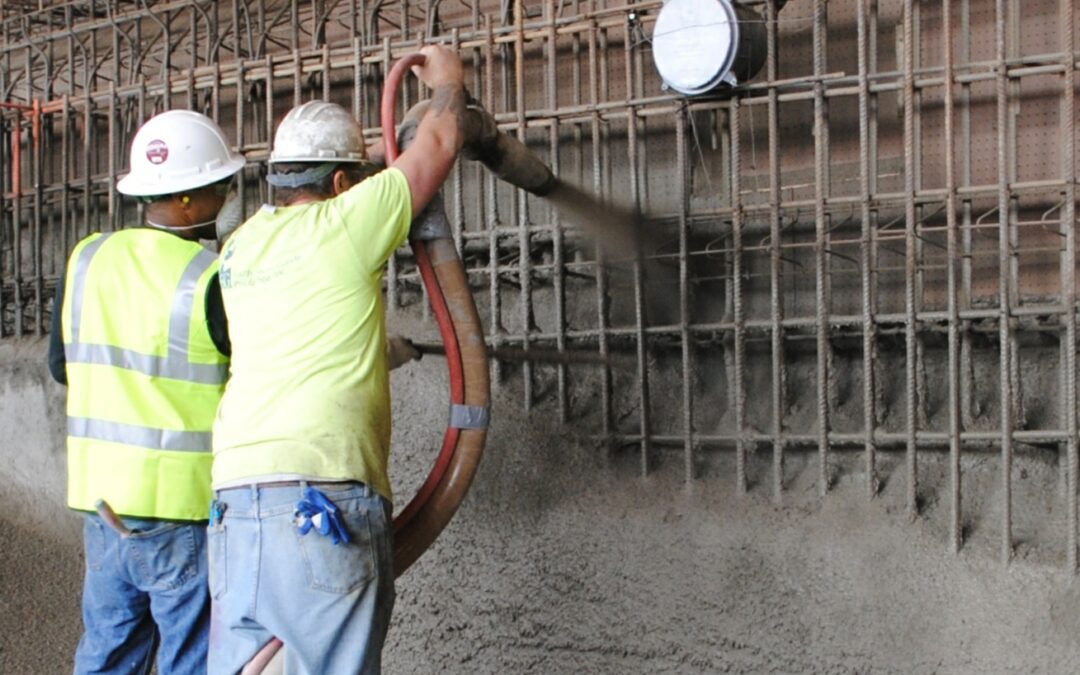Can Shotcrete Be Used as a Retaining Wall?
Shotcrete, a method of applying concrete projected at high velocity onto a surface, has revolutionized various construction practices. Among its myriad applications, the use of shotcrete for retaining walls has gained significant attention due to its versatility and efficiency. This article delves into the suitability of shotcrete as a material for retaining walls, exploring its benefits, application techniques, and essential considerations for ensuring structural integrity and longevity.
Key Takeaways:
- Shotcrete is an adaptable and durable material that can be effectively used for constructing retaining walls.
- Utilizing shotcrete for retaining walls at your property offers benefits like design flexibility, cost-effectiveness, and quick application.
- Proper design, application, and maintenance are crucial for ensuring the longevity and effectiveness of a shotcrete retaining wall.
Understanding Shotcrete
Shotcrete is essentially concrete that is conveyed through a hose and pneumatically projected at high velocity onto a surface. It is distinguished by its method of placement and compaction at the same time due to the force with which it is projected. There are two primary methods of shotcrete application: dry mix (gunite) and wet mix. The choice between these methods depends on the specific requirements of the construction project.
Shotcrete for Retaining Walls
Concrete retaining walls are engineered constructions that hold back soil on steep inclines. These walls are crucial in creating level areas at different heights, especially on landscapes with challenging or steep slopes. They play a pivotal role in transforming and stabilizing terrain for various uses, such as agricultural terracing on hillsides or providing foundational support for bridges and roads.
Benefits of Using Shotcrete for Retaining Walls
- Design Flexibility: Shotcrete allows for the creation of curved or irregularly shaped walls, offering more design freedom compared to traditional concrete methods.
- Speed of Construction: The shotcrete process is faster than traditional wall-building methods such as stone retaining walls, since it eliminates the need for formwork and can be applied quickly.
- Cost-Effectiveness: Reduced labor and time, along with minimal formwork, contribute to the cost efficiency of shotcrete for retaining walls.
- Durability: Additionally, when properly applied, shotcrete walls are extremely durable and resistant to weathering and soil erosion.

Application of Shotcrete in Retaining Walls
The application and installation of shotcrete in retaining walls involves a few critical steps:
- Surface Preparation: The ground where the retaining wall will be constructed needs to be properly prepared to ensure the shotcrete adheres effectively.
- Reinforcement: Reinforcing the wall with steel rebar or mesh is crucial to enhance the structural integrity of the shotcrete wall.
- Shotcrete Application: The shotcrete is pneumatically sprayed onto the surface in layers, building up to the desired thickness.
- Finishing: The surface of the shotcrete is then finished to the required texture and appearance.
Maintaining Your Retaining Wall and Ensuring Longevity
Proper maintenance is vital to extend the lifespan of a shotcrete retaining wall. Regular inspections of the shotcrete wall help identify any potential issues, such as cracks or soil erosion, early on. Generally, when constructed and maintained correctly, a shotcrete retaining wall can last for several decades.
A Shotcrete Wall is a Great Choice
In conclusion, shotcrete presents a robust, flexible, and efficient option for constructing retaining walls at your property. Its advantages make it a preferred choice for a variety of projects, ranging from residential landscaping to large-scale infrastructure. By understanding the properties, benefits, and maintenance requirements of shotcrete, you can leverage this innovative material to create durable, functional, and aesthetically pleasing retaining walls that stand the test of time. Contact SSG Shotcrete today to see if a retaining wall is a good fit for your next project.

FAQ Section
1. How long do shotcrete retaining walls last? With proper design, application, drainage, and maintenance, a shotcrete retaining wall lasts for over 50 years. The durability is influenced by environmental conditions, the quality of materials, and construction practices.
2. Is shotcrete environmentally friendly? Shotcrete is relatively environmentally friendly due to its efficient use of materials and the potential for using recycled content in the mix. The process also minimizes waste compared to traditional concrete construction methods.
3. Can shotcrete walls be designed to match the natural landscape? Yes, shotcrete walls can be sculpted and colored to blend with the earth and surrounding environment, making them ideal for landscape integration.
4. What are the main differences between shotcrete and traditional concrete blocks and walls? The primary differences lie in the method of application. Shotcrete is pneumatically applied, which allows for more versatile designs and faster construction. In contrast, traditional concrete requires formwork and takes longer to set.
5. How does the cost of a shotcrete retaining wall compare to traditional methods? While the initial material cost for shotcrete can be higher, the overall cost often ends up being lower due to reduced labor, time, and formwork requirements. Plus, you’re much less likely to experience retaining wall failure.

